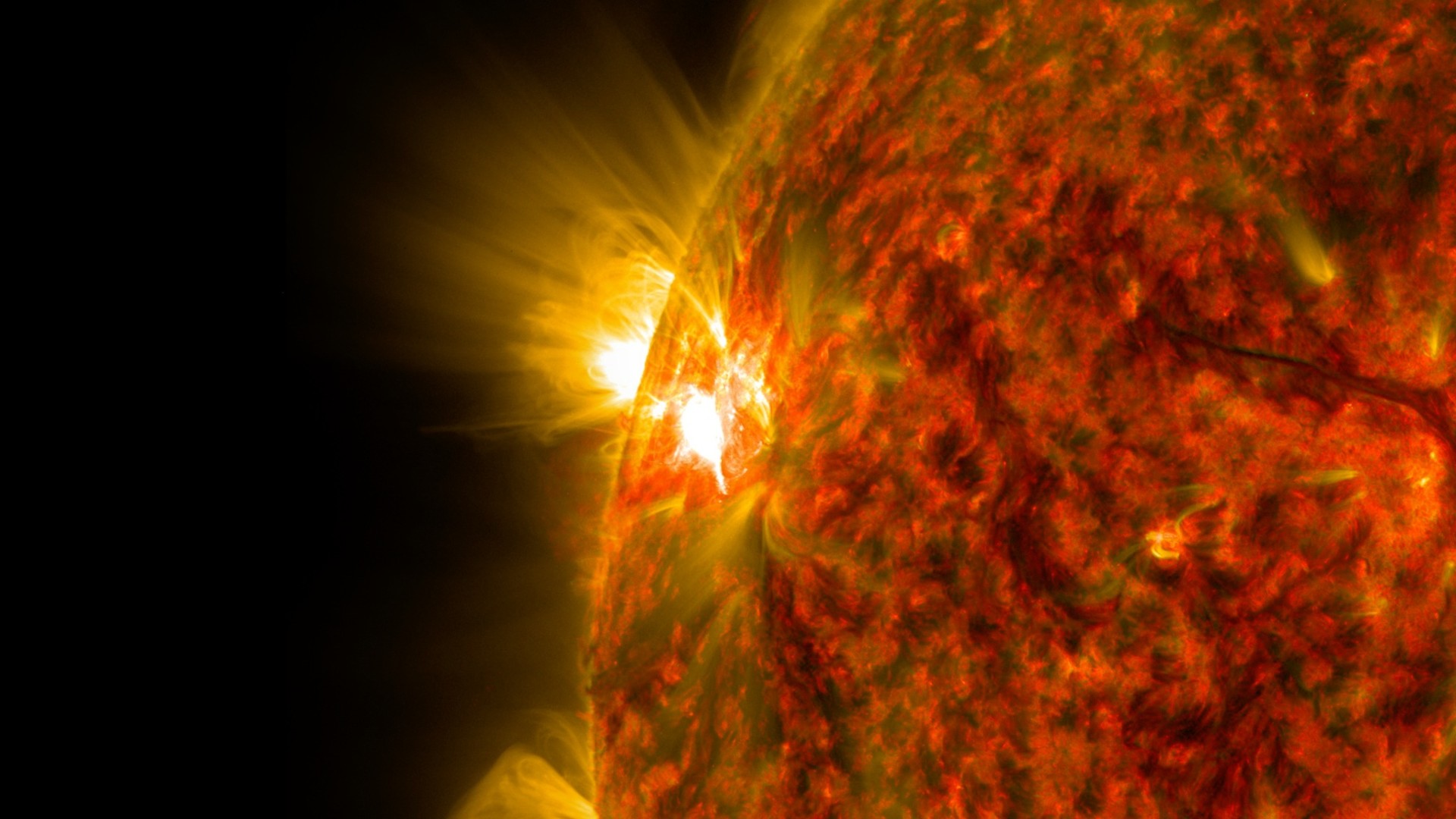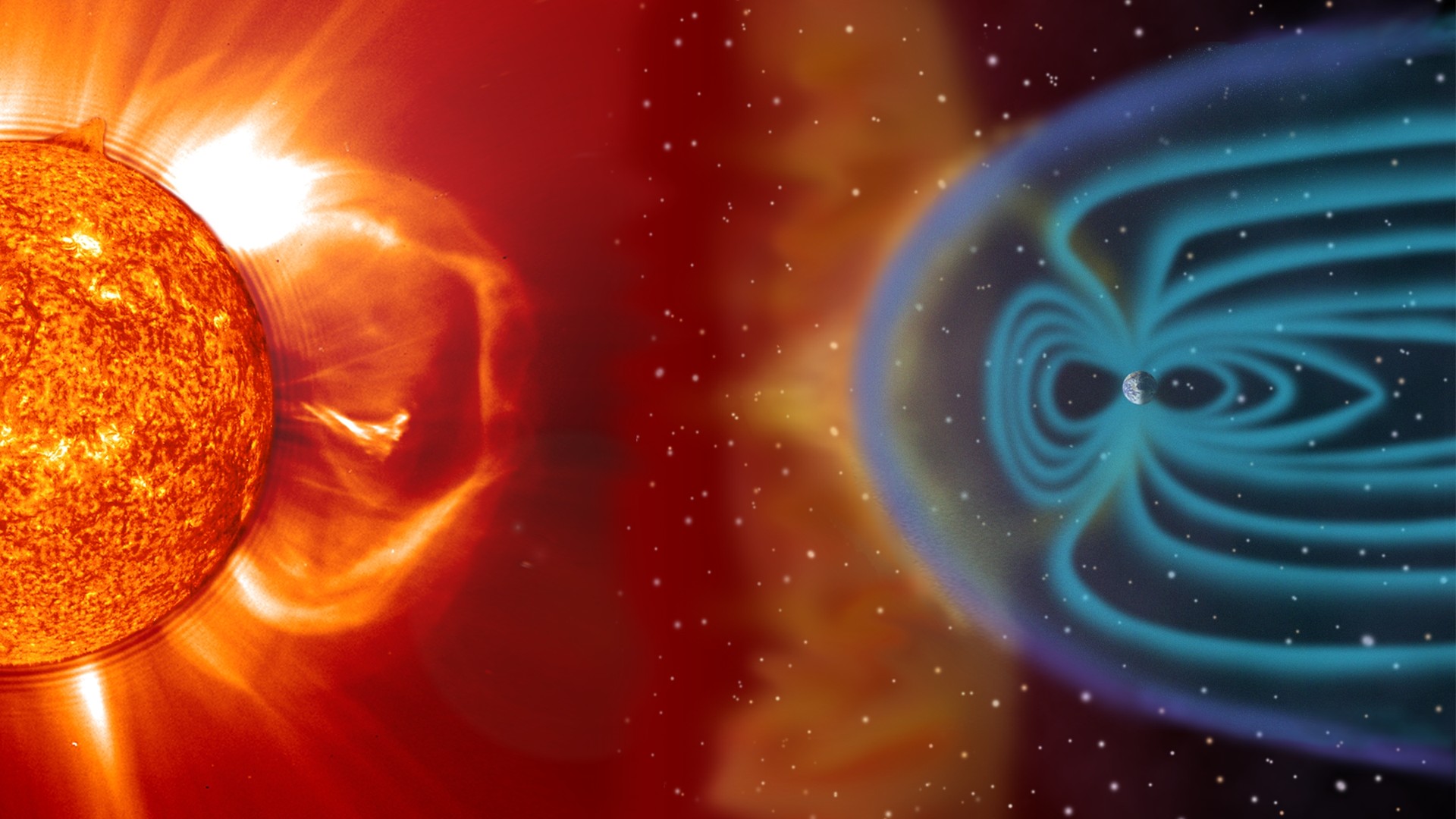Earth reaches its closest point to the sun — just in time to be slammed by a solar storm
A minor G1-class geomagnetic storm will hit Earth right as our planet reaches perihelion, its closest point to the sun.

On Jan. 4, Earth will reach its closest point to the sun all year in an annual event called perihelion. The precise distance varies from year to year, but perihelion 2023 will see our planet orbiting 91.4 million miles (147 million kilometers) from the sun — or roughly 3 million miles (4.8 million km) closer than Earth's aphelion, its farthest point from the sun, which will occur on July 6.
Our home star has apparently decided to mark the occasion with a bang. On Jan. 4 and 5, a slow-moving glob of solar particles called a coronal mass ejection (CME) will slam into Earth's magnetic field.
The collision is expected to trigger a minor G1-class geomagnetic storm that could briefly frazzle power grids, cause radio blackouts and push colorful auroras much farther south than usual — possibly as far south as Michigan and Maine in the United States, according to the National Oceanic and Atmospheric Administration's (NOAA) Space Weather Prediction Center.
However, this weak-ranking storm is not likely to have any lasting impacts on our planet or its inhabitants — so enjoy the cosmic light show if you can.
What is perihelion?
Earth doesn't orbit the sun in a perfect circle but rather in a wobbly ellipse. This elliptical orbit naturally means Earth moves closer to the sun during certain parts of the year and farther away during others.
For many years now, Earth's perihelion has occurred within a few weeks of the winter solstice, the official beginning of winter in the Northern Hemisphere, when the North Pole is at its farthest tilt away from the sun and the South Pole tilts closer toward the sun. However, this marriage of solstice and perihelion is just a coincidence; the solstice is all about Earth's tilt toward or away from the sun, while perihelion is about the planet's physical distance from the sun.
The actual date of perihelion is always shifting, changing by about two days every century due to small quirks in our planet's orbit. In the year 1246, perihelion and the winter solstice actually occurred on the same day. Thousands of years from now, in the year 6430, perihelion will line up perfectly with the spring equinox on March 20, according to Live Science's sister site Space.com.
Sign up for the Live Science daily newsletter now
Get the world’s most fascinating discoveries delivered straight to your inbox.
Explosions from the sun

It's also pure coincidence that this year's perihelion lines up with a geomagnetic storm.
These storms occur when charged solar particles crash into Earth's magnetic field (called the magnetosphere), compressing it slightly and allowing some particles to rain down on the planet's upper atmosphere. Most geomagnetic storms are minor, resulting in clearer auroras and occasional radio blackouts at high latitudes. But some, such as the infamous Carrington Event of 1859, can push auroras from both poles all the way down to the equator and cause mass electrical disruptions around the world.
Geomagnetic storms are triggered by CMEs — giant outbursts of charged particles released from the sun when magnetic-field lines at the sun's surface become too tangled and suddenly snap. These magnetic tangles are often associated with sunspots, dark regions of intense magnetic activity that periodically open and close on the sun's surface.
If a sunspot is pointed toward Earth during one of these magnetic snaps, the resulting CME will blast toward us over the course of several days. The CME expected to hit Earth on Jan. 4 and 5 burst out of an Earth-facing sunspot on Dec. 30, according to NOAA.
If it feels like you've been hearing about CMEs a lot lately, you're not imagining it. The sun follows an 11-year cycle of activity, with more sunspots — and more magnetic disturbances — appearing close to the period of peak activity, known as the solar maximum. NASA predicts that the next solar maximum will occur in July 2025. As this point approaches, solar storms will become more frequent and more intense.

Brandon is the space/physics editor at Live Science. His writing has appeared in The Washington Post, Reader's Digest, CBS.com, the Richard Dawkins Foundation website and other outlets. He holds a bachelor's degree in creative writing from the University of Arizona, with minors in journalism and media arts. He enjoys writing most about space, geoscience and the mysteries of the universe.










